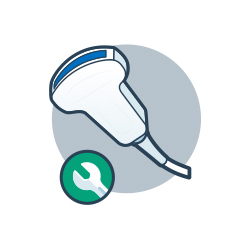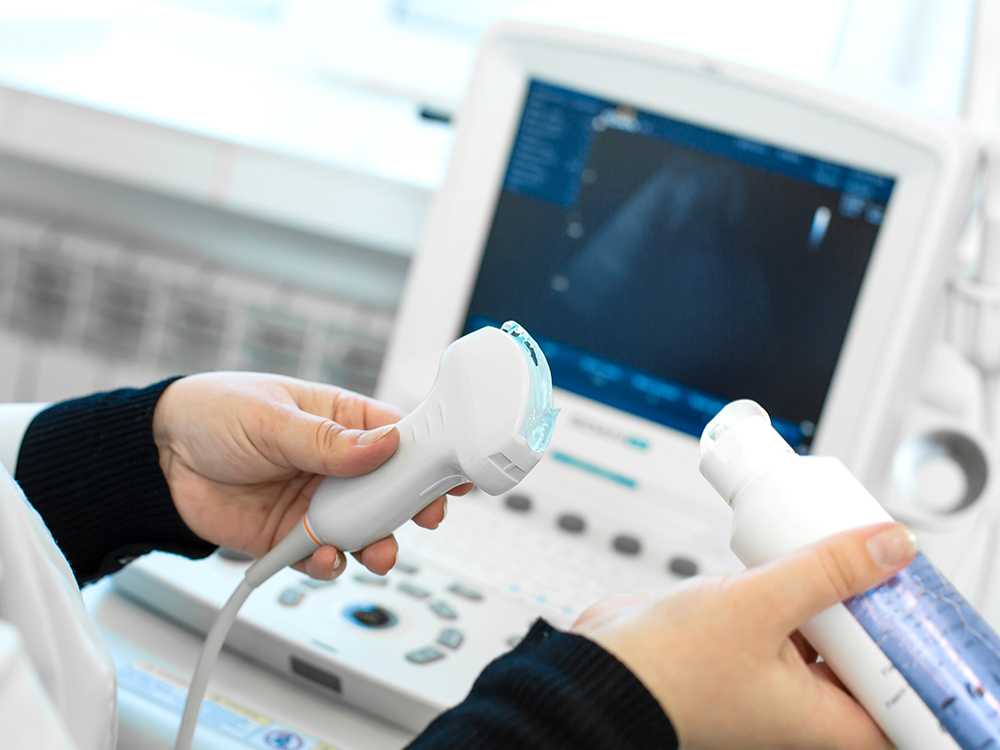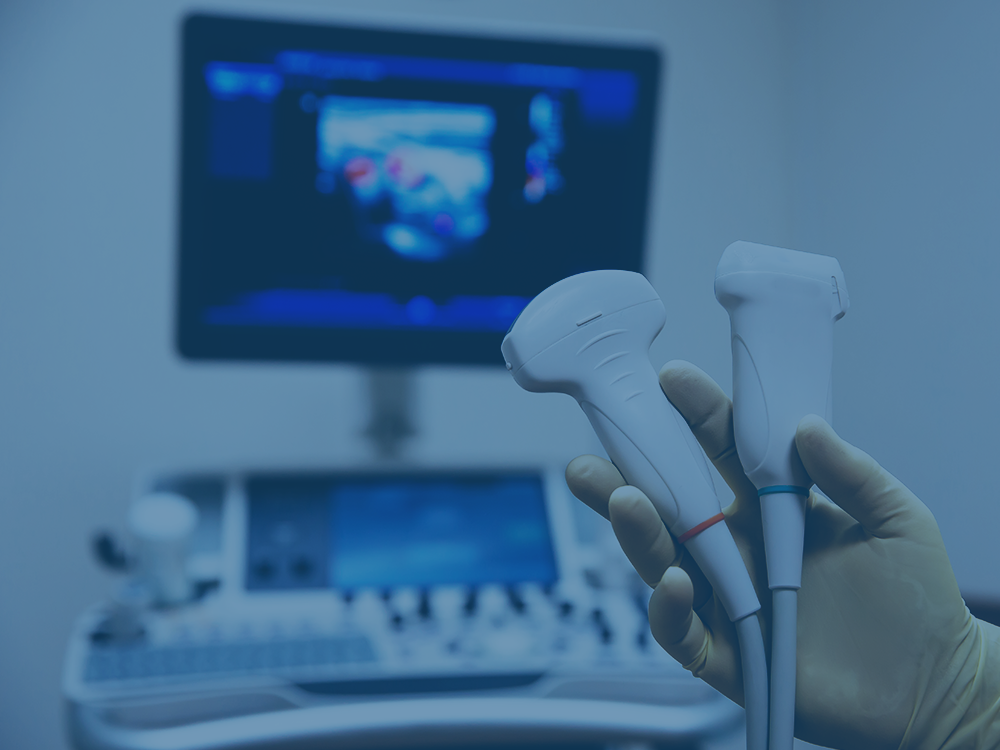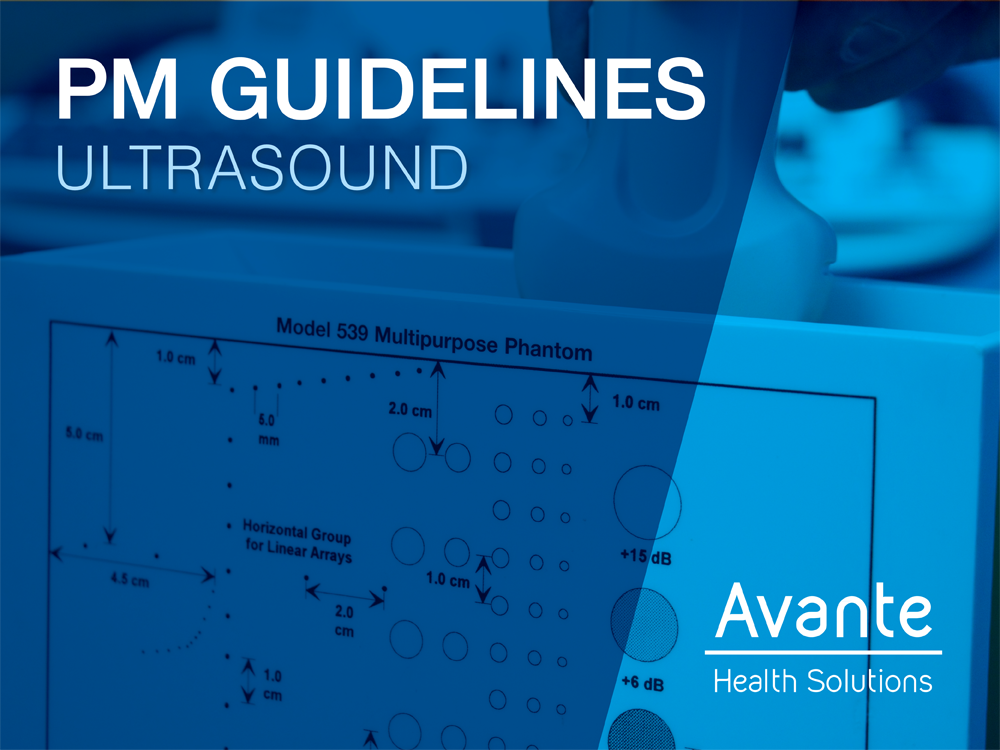Expert Advice: Ultrasound Transducer Maintenance Tips from Med Vest Technology
August 20, 2020
Protect your ultrasound transducers with these routine inspection and preventive maintenance recommendations from the ultrasound experts at Med Vest Technology.
Ultrasound transducers are highly specialized, highly priced components of any imaging suite. These devices also undergo daily use and direct contact with patients, causing them to exhibit signs of wear and tear. In this article, we will discuss tips for inspecting ultrasound transducers at your facility, and prevention methods to keep your ultrasound transducers in proper working order.
Ultrasound Probe Inspection: What to Look For
To properly inspect any ultrasound probe, our experts recommend focusing on each component individually: probe connector, cable, strain relief, probe housing, and acoustic lens. This ensures a thorough inspection, and allows you to identify even the smallest flaws in an ultrasound probe.
Probe Connector
When examining the probe connector, look for bent, broken, or missing pins. Housing screws can also go missing during regular use, causing gaps in the housing. Be sure to also check the locking knob to make sure it’s working correctly.
Acoustic Lens
To verify the efficacy of the acoustic lens on an ultrasound probe, check for cuts, chips, sealing gaps, discoloration, and delamination (separation between crystal and acoustic lens). Damage to the acoustic lens can affect the overall image quality produced by your ultrasound system.
Strain Relief
After examining the cable, be sure to consider the probe’s strain reliefs. This integral component joins the cable and probe housing, providing an easement at stress points. Stress reliefs can be prone to cuts, tearing and cable separation.
Cable
Ultrasound probe cable damage is common, and can be caused by a wide variety of factors. Cables can sometimes be run over by ultrasound consoles, leading to tears in the cable, covering and exposed wires. Regular disinfecting cycles can also cause chemical damage to the cable. During a routine inspection, be sure to check for cuts, tears, stains, cable separation, and exposed wires to ensure proper ultrasound probe function.
Probe Housing
Aside from gaps in the seals, cracked or broken plastic, discoloration, and other obvious signs of damage, not all probe housing issues can be assessed through a simple visual examination. To be sure that the probe housing is properly sealed, lightly squeeze the probe and look for movement along the seams that would indicate a broken seal.
Prevention: Best Practices to Protect Your Investment
While no ultrasound probe can last forever, our experts know you can increase the life of your transducers with some key strategies. These practices not only make your equipment last longer, but also help to ensure patient and operator safety.
Keys to Safe, Effective Ultrasound Transducer Routine Maintenance
- Perform low level disinfection procedures between each use.
- Never submerge connector in cleaning solution or water.
- Store transducer upright in a ventilated area.
- Perform both visual and physical inspection of transducer during reprocessing.
- Leakage and safety testing is required when physical damage is present.
- High level disinfection required when exposed to bodily fluids or contaminants.
- Remove probe from service if liquid can enter the internal structures of the probe.
When It’s Time to See the Professionals
As a leading ultrasound solutions provider, Med Vest Technology has one of the top ultrasound transducer repair programs in the industry. Med Vest Technology can diagnose your current probe, make needed repairs, and then deliver a repaired probe to you in as few as three days, at a fraction of the cost of purchasing a new probe.
We perform all probe repair services in our state-of-the-art facility, and our quality management processes have been ISO 13485:2016 certified. Our expertise covers both TEE and standard probes manufactured by major OEMs including GE, Philips, and Siemens.
Use our handy ultrasound probe troubleshooting guide to determine whether your transducer needs service, and send it to us for a complimentary diagnostic exam. For more information about ultrasound transducer repair options from Avante Health Solutions, visit https://medvesttech.com/ultrasound/services/probe-repair.






